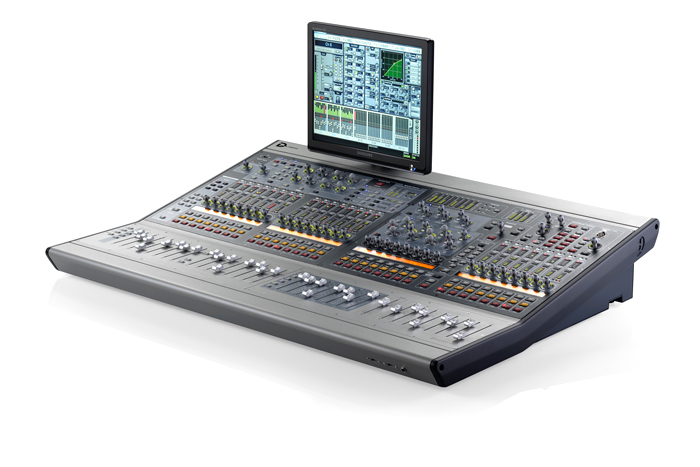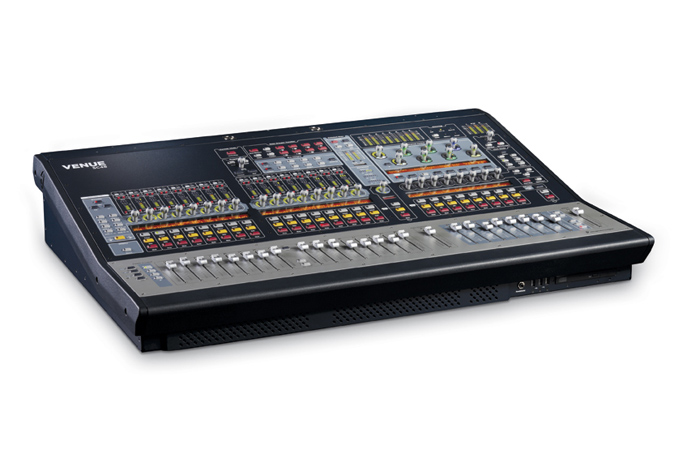Recently I have gotten the opportunity to prep a few gigs. Prepping a gig before it goes out on the road gives us the chance to make sure the system we built works properly and to troubleshoot the system to work out any problems that can arise.
Working on show prep has given me hands-on experience on how everything gets connected and a better idea of what the big picture looks like. I have gained experience with consoles I’ve never worked with before and have improved my troubleshooting skills.
The first step at Eighth Day Sound is to get all system pieces together. We get a basic setup of were monitors and front of house are going to be and move the gear and racks into the proper areas. After that, we run power to the consoles and racks from feeder outlets. At the show, a house electrician would tie in power. Hooking up the feeder requires you to first hook up the ground connector (which is usually green), then neutral (which is usually white) and then the hots (black then red). When disconnecting the feeder, you disconnect the feeder opposite from hot to ground.
Connecting the feeder to the Power Distro (PD) first before connecting the feeder to the power source is always a good idea to avoid hazards with “live” ends of the feeder laying around. Once, we have power at the PD, we run power to all racks & consoles with A/C cables. After that we make sure all units and consoles power up.
 I have mainly worked prepping monitors and have been working with the Avid Venue The Profile and Avid Venue SC48. Both the Avid Venue Profile and Avid Venue SC48 have the same Venue software platform but the physical layout of the consoles are a little different. Both are digital boards with the capabilities to assign inserts, inputs & outputs all within the box. However, the SC48 has some physical outputs & inputs on the back of the console, while the Profile gets all of its inputs and outputs from the Avid FOH Stage Cage. The Profile also has access to the oscillator from the physical layout of the board but you only have access to the oscillator through the software on the SC48. I like both consoles, the software is easy to use and quick to learn. The layouts of each console are easy to follow and understand.
I have mainly worked prepping monitors and have been working with the Avid Venue The Profile and Avid Venue SC48. Both the Avid Venue Profile and Avid Venue SC48 have the same Venue software platform but the physical layout of the consoles are a little different. Both are digital boards with the capabilities to assign inserts, inputs & outputs all within the box. However, the SC48 has some physical outputs & inputs on the back of the console, while the Profile gets all of its inputs and outputs from the Avid FOH Stage Cage. The Profile also has access to the oscillator from the physical layout of the board but you only have access to the oscillator through the software on the SC48. I like both consoles, the software is easy to use and quick to learn. The layouts of each console are easy to follow and understand.
Once everything is powered up and properly linked and assigned, we test all outputs by sending pink noise from the console’s oscillator to assigned outputs and we select and listen to each channel to make sure that there is signal. We also check that the signal is being sent to the amps and the In-Ears Monitoring (IEM) units. We test the IEM packs with headphones to make sure the signal is reaching each pack. FOH checks their outputs by sending pink noise through their amps first, then speakers.
Once outputs are checked, we then do a one-to-one to test all inputs. With a one-to-one, we have someone with a mic go through each channel on the 12pr boxes and check to make sure that each input is assigned to the correct channel and is getting signal. We test the intercom (COM for short) making sure the belt packs are connected to the COM power supply, beacons, and headsets. We check to make sure the beacons are working properly and that you can be talk and be heard in each headset.
We make sure to label everything accordingly using both colors and numbers indicating what cables go where. After that, as long as nothing needs to be changed or worked on, we pack it all up and put it in the loading area.
Pictures of consoles from Avid. www.Avid.com
